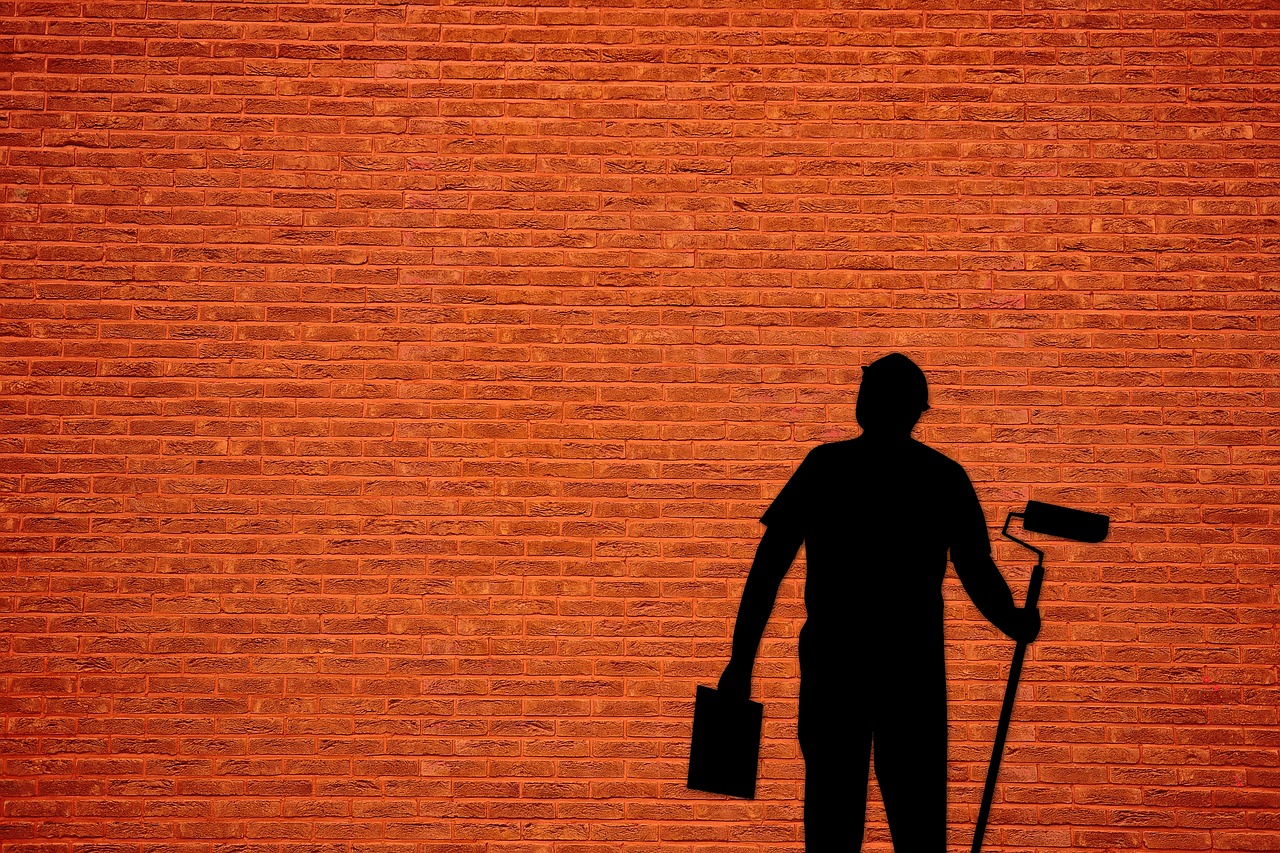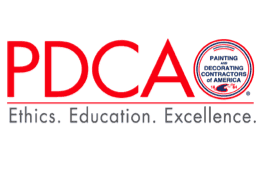Painting the exterior of a house or any building is a huge task. There are a number of things that need to be considered to make sure the paint job will last the test of time – and it still has to look good. From understanding the right color to getting the proper paint for the exterior to making sure all safety precautions are taken, there’s a lot of things to worry about. Every climate also has to be considered, and in Colorado, your building has to be protected against everything from the sun’s punishing rays to the upstart snow and hail storms that can happen in an instant. Residential painting in Denver can be a tricky and expensive project if you don’t know what you’re doing, and using a trusted painting company can also help you make sure you get the most out of your project. For those that want to attempt the project on their own, it’s important to take a number of things into consideration.
Safety First
When taking on any exterior painting project, it’s crucial to address the safety issues of the overall scope of what you’ll be doing. Be sure to wear appropriate safety gear – including gloves, goggles, and masks – especially when working around paint fumes or when sanding. Also be sure to follow any safety instructions suggested by the paint manufacturer. Also make sure the weather is going to cooperate. The best conditions for exterior painting usually come on dry, calm days. This will help give you optimal conditions for both applying the paint and for it to dry. If you’re going to be painting in high or other hard-to-reach areas, be sure that safety precautions are followed when using ladders or scaffolding. Professional exterior painters have their own guidelines they need to follow, and you should follow a similar path with your preparations. Be sure to make the ladders or scaffolding are in good condition, and that they are set up on stable, level ground. Always maintain three points of contact (two feet and one hand or two hands and one foot) on the ladder. You can also use stabilizers or stand-offs to prevent the ladder from slipping or damaging the painted surface.
Preparation is Key
You know your house needs a fresh look, but there are a lot of things to do before the first brush is dipped into a can of paint. It’s important to check all around the building for any imperfections that could impact the final paint job. Start by thoroughly cleaning the surfaces you plan to paint. This might involve some simple scrubbing with soap and water, but don’t be afraid to use a pressure washer to get the surface clean of all dirt and grime. This will also help you remove some loose or flaking paint, but be sure to get rid of any remaining flaking with a scraper or wire brush. Once you have the surface free of debris and all of the other dirt and grime, inspect the entirety of the surface for any other potential issues. Check things out for any cracks or holes on the surface, and fill them with caulk or other filler. Once the filler is dry, be sure to sand them until they are smooth with the rest of the surface. This will result in a cleaner looking final project, and get rid of any unsightly blemishes on the surface.
Get Quality Paint & Tools
Budget is always a big consideration with any large project, and painting exteriors is no different. However, selecting a high-quality exterior paint is crucial. There are numerous paints out there for any surface – wood, metal, and even concrete, to name a few. While it’s important to get the right paint for the right surface, it’s also important to consider the other factors that impact the exterior. Retaining the proper color, durability, and weather resistance also play a major role in the lifespan of your paint job. By getting high-quality paint, you can have peace of mind knowing it will last the test of time. It’s also a good idea to invest in good-quality tools like brushes, rollers, and/or paint sprayers. These will offer better coverage, as they’re designed to hold more paint, and will give a smoother finish. The results will reduce streaks and uneven patches on the surface. It might be more expensive up front to get high-quality paint and other tools, but it will make a big difference in the final result. It will also likely save money in the long run, since you won’t have to repaint the exterior as soon as with inferior or lower-quality paint.
Apply Primer if Necessary
When painting a bare surface – or a surface where the existing paint is in poor condition – it’s a good idea to apply primer before painting. Primer creates a bonding surface for the paint to adhere to, allowing for the fresh coat of paint to stick better on porous or uneven surfaces. This is particularly important when dealing with surfaces like wood, brick, or other masonry. The primer will help prevent blistering, flaking, or peeling of the paint over time. It also helps even out variations in the surface texture, leading to a more uniform finish when the paint is applied. Primer also helps with the durability of the paint project. Many primers contain additives that help seal and protect the underlying surface from moisture, the sun’s harmful UV rays, and other environmental factors. This can not only extend the lifespan of the paint job, but it can also reduce the frequency of maintenance and repainting. Primer delivers a strong foundation for the paint, helping the coats of paint maintain its appearance and resist fading and other types of wear over the years.
Time to Apply the Paint
Once the surface is prepared and primed, it’s time to get to the main focus of applying the paint. Choose the right exterior house paint color and make sure the paint is stirred and mixed properly to ensure even consistency, and then begin painting from the top down. Work in small sections to help prevent dripping and ensure a smoother finish. Larger, flat surfaces can be covered with a roller or paint sprayer, but use smaller brushes for the corners, edges, and other smaller areas. This will ensure a more precise finish. It’s also important to make sure you protect surfaces you don’t plan on painting with painter’s tape or plastic sheeting. Be sure to apply the paint using long and smooth strokes. Don’t overload your brushes or rollers with paint, as that promotes dripping and uneven coverage. If you’re applying more than one coat, be sure to allow the first coat to dry completely before applying subsequent coats. The manufacturer of the paint should provide instructions or guidelines regarding drying times. Applying the paint evenly is critical to the look of the final project, as uneven coverage can look unfinished or distracting.
Clean Up Everything
The actual painting is the most time consuming aspect of the job, but it’s important to clean things up properly once you’re finished. Don’t let the paint dry for too long on your brushes and rollers. Clean the tools you used to apply the paint promptly, using soap and water or paint thinner – depending on the type of paint you used. Letting this part of the process go too long will result in stubborn sticky paint adhering to the brushes or rollers, making the cleaning aspect take much longer. When removing painting tape or protective plastic sheeting, make sure to be careful. If this task is performed too recklessly, it can pull up the paint on the surface – leaving more work to do or a messy result. Be sure to thoroughly address all areas you worked in, picking up all of the tools used throughout the process. This also includes tearing down any scaffolding or ladders that were used to reach high or tough-to-reach areas.
Continued Maintenance
Once the paint job is finished, there is still some work to do – but it’s not much. Regularly inspect the painted surfaces over time. This will reveal any signs of damage or wear, such as cracking or peeling paint. Be sure to touch up any areas that need attention, as it will maintain the appearance and protect the underlying surface. These inspections likely only need to be done once or twice a year, or after something happens (like a hail storm) that could damage the surface. Keep the painted surfaces clean to prevent dirt and other contaminants from compromising the appearance and protection of the paint. If there is any damage, be sure to address it promptly. Scrape away any loose paint, sand the area smooth, and touch up the area as needed to protect it from further deterioration. Maintaining your exterior paint job will help extend the life of the paint, and keep the exterior looking like new for a longer period of time. Exterior paint jobs can be a huge undertaking, and they require a lot of attention to detail. For more information on steps to paint the exterior of your home, reach out to the Denver-based painting experts at Colorado Painting today.












































